Portland Prison, Portland, Dorset
In 1846, with growing concern over fears of a possible French invasion, the British government began a programme of measures to improve harbour and other defences on the south coast of England. One of these schemes was the construction of two breakwater arms to create a large 'harbour of refuge' at the north side of the island of Portland, which provided a new anchorage for naval shipping. To carry out the construction work, a temporary public works prison was erected at the east side of Portland, on what is now Grove Road, which came into operation in November 1848, as detailed by a contemporary newspaper report of the following month:
The New Convict Establishment in the Island of Portland.—This prison has been opened for partial occupation, and is tenanted by about 64 prisoners. In March last the site on which it stands was a barren uncultivated waste, miscalled the grove. There is now a principal building, divided into four spacious corridors; they contain separate cells or sleeping berths, arranged one above the other, in four storeys, and accessible by galleries; an infirmary, capable accommodating 60 patients; gasworks; engine house; tanks for three months' supply of water; separate cells for punishment; and an inner and outer boundary wall, 18 feet in height, and enclosing area of many acres, all adapted for the purposes of the establishment, which, it is presumed, will afford further accommodation for seven or eight hundred more prisoners. On each side of the entrance gates are erected houses for the principal officers, and at short distance cottages for the subordinate officers and wardens. The prison was arranged under the guidance of Col. Jebb, who planned the model prison at Pentonville.
The entrance to the prison was at the south of the site, where the gatehouse and houses for the governor were placed, with rows of officers' cottages placed nearby. The design provided for three long parallel blocks running north-south, the central one being a utility block housing the kitchen, bakery, laundry, smithy etc., with the two cell blocks placed at either side. A chapel was placed to the south of the utility block. At the prison's opening, only the west cell block had been erected. The two cell blocks, constructed in timber and stone, each had four large open halls, with four tiers of cells on each side. The cells, measuring just 7 feet by 4 feet were separated by partitions of corrugated iron. They were fitted with a hammock, stool, table and shelves. The site also included punishment cells, an infirmary, and a school for prison officers' children.
Convicts sent to Portland first underwent a period of solitary confinement, then performed hard labour in the quarries at the north of the prison. Good behaviour would earn prisoners a 'Ticket of Leave', granting them certain freedoms when they were subsequently transported to Australia, such as the ability to seek employment within their designated district of residence. The prison buildings were steadily expanded with the construction of the eastern cell block and an additional hall to the west of western cell block. By 1853, the prison had a capacity of 1500 places.
In 1869, the government decided to make the prison a permanent establishment, with further expansion of the buildings. Between 1870 and 1872, the inmates built St. Peter's Church and the Prison Officers' School. Between 1896 and 1905, two further breakwater arms were constructed to fully enclose Portland Harbour. A major programme of rebuilding was carried out from 1895 to 1911, with new, permanent stone buildings being erected. The original west block was rebuilt between 1896-06 and the east block between 1906-11.
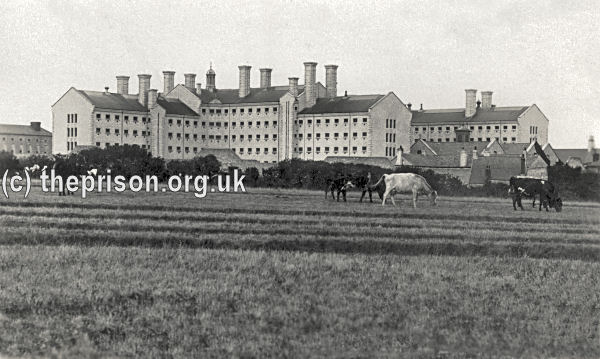
Portland Prison from the south-west, Portland, Dorset, c.1912. © Peter Higginbotham
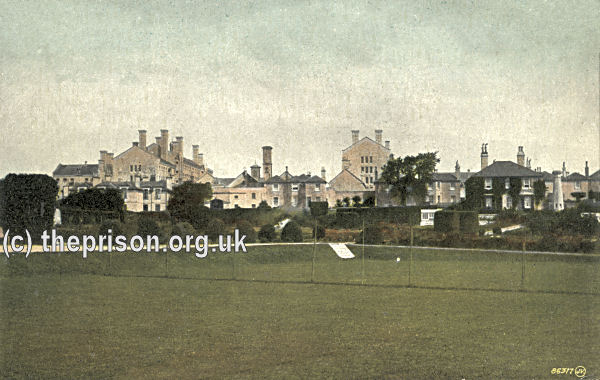
Portland Prison from the south, Portland, Dorset, c.1912. © Peter Higginbotham
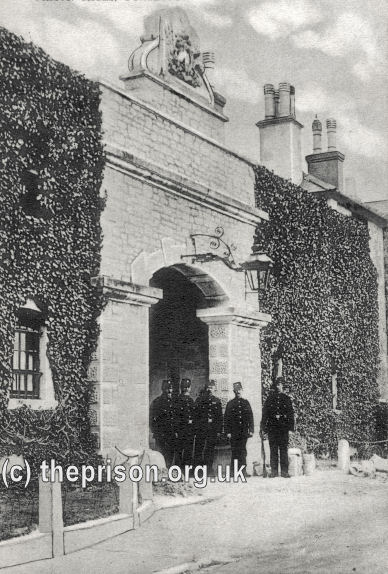
Portland Prison officers at entrance gate, Portland, early 1900s. © Peter Higginbotham
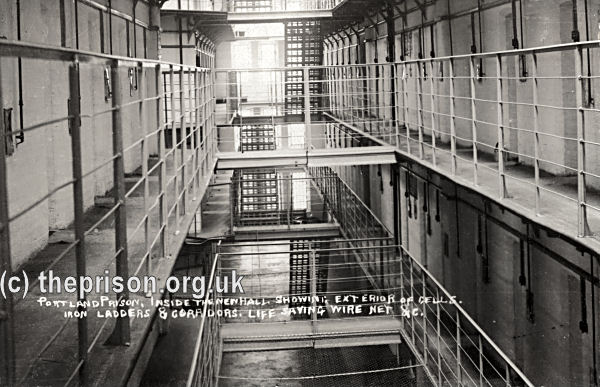
Portland Prison new wing interior, Portland, c.1910. © Peter Higginbotham
Writing in 1907, Jabez Balfour recalled a cell he had occupied at portland in 1896:
It was nothing but a small corrugated iron kennel, with a stone or slate floor. There was not so much as a bit of wooden grating on the floor, so that a prisoner, when his boots and stockings were off, had to tread the icy-cold flags. The only articles of furniture in it were a wooden stool, a very diminutive flap table, and a hammock and bedding rolled up on a shelf or ledge in one corner.
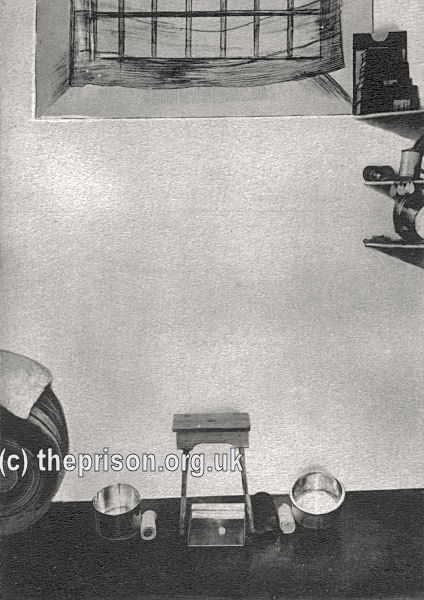
Portland Prison cell interior, Portland, early 1900s. © Peter Higginbotham
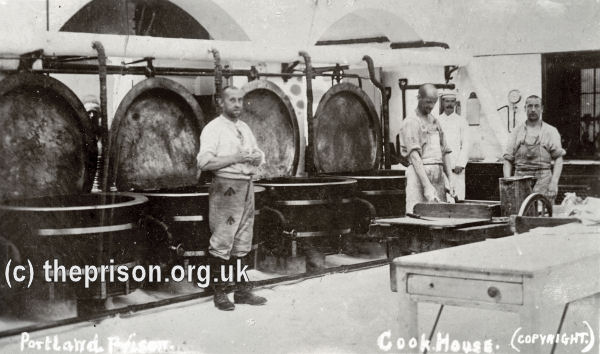
Portland Prison kitchen, Portland, early 1900s. © Peter Higginbotham
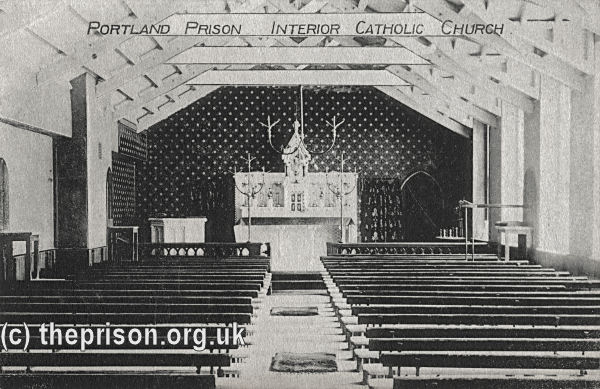
Portland Prison Roman Catholic Chapel interior, Portland, early 1900s. © Peter Higginbotham
The prison and quarries became something of an attraction for tourists as it was possible to watch the convicts at their work in the quarries.
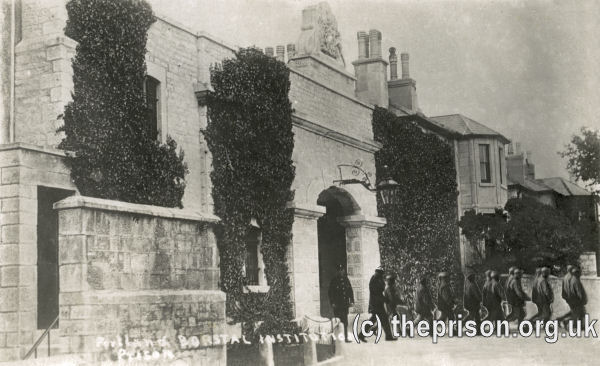
Portland Prison inmates off to work, Portland, early 1900s. © Peter Higginbotham
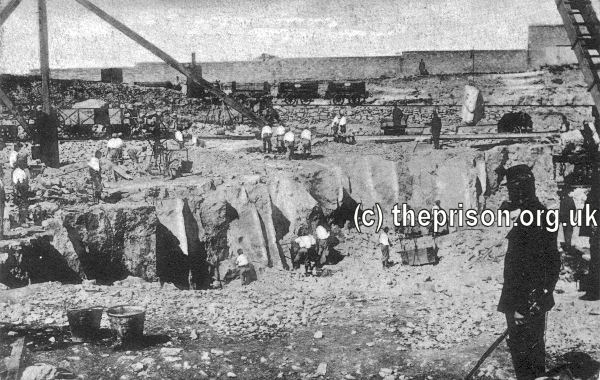
Portland Prison quarries, Portland, early 1900s. © Peter Higginbotham
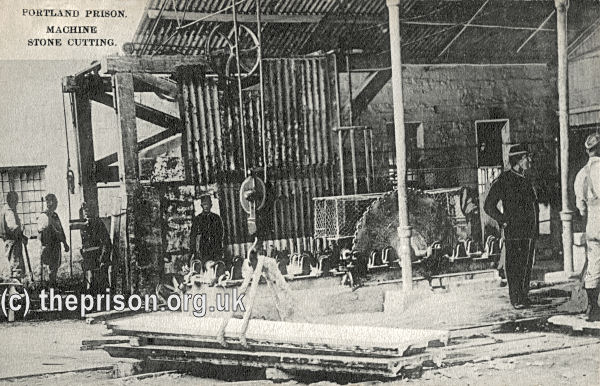
Portland Prison machine stone-cutting, Portland, early 1900s. © Peter Higginbotham
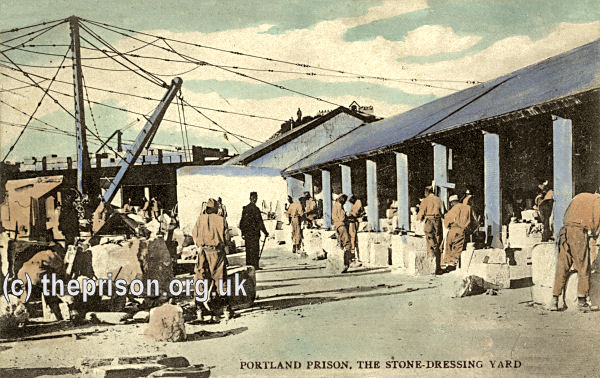
Portland Prison stone-dressing yard, Portland, early 1900s. © Peter Higginbotham
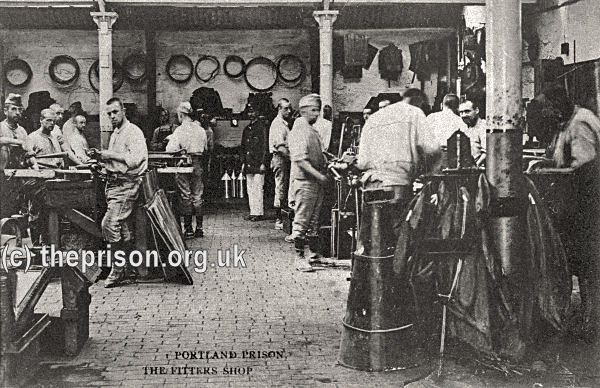
Portland Prison Fitters Shop, Portland, early 1900s. © Peter Higginbotham
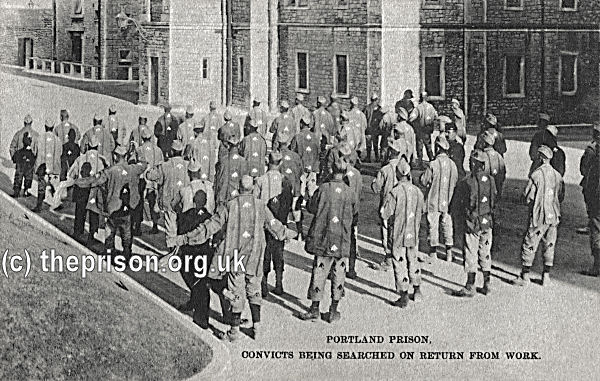
Portland Prison inmates being searched on return from work, Portland, early 1900s. © Peter Higginbotham
In February 1921, the government announced that prison would be converted into a the Portland Borstal Institution.
Records
Note: many repositories impose a closure period of up to 100 years for records identifying individuals. Before travelling a long distance, always check that the records you want to consult will be available.
- The National Archives, Kew, Richmond, Surrey, TW9 4DU. Prison registers (1848-65); Quarterly returns of prisoners in Hulks and Convict Prisons, Portland, Dorset (1848-76); General record of prisoners (1859-65); Register of prison staff (1853-80); Governor's journals (1848-78).
- Find My Past has digitized many of the National Archives' prison records, including prisoner-of-war records, plus a variety of local records including Manchester, York and Plymouth. More information.
- Prison-related records on
Ancestry UK
include Prison Commission Records, 1770-1951
, and local records from London, Swansea, Gloucesterhire and West Yorkshire. More information.
- The Genealogist also has a number of National Archives' prison records. More information.
Census
Bibliography
- Higginbotham, Peter The Prison Cookbook: A History of the English Prison and its Food (2010, The History Press)
- Brodie, A. Behind Bars - The Hidden Architecture of England's Prisons (2000, English Heritage)
- Brodie, A., Croom, J. & Davies, J.O. English Prisons: An Architectural History (2002, English Heritage)
- Harding, C., Hines, B., Ireland, R., Rawlings, P. Imprisonment in England and Wales (1985, Croom Helm)
- McConville, Sean A History of English Prison Administration: Volume I 1750-1877 (1981, Routledge & Kegan Paul)
- Morris, N. and Rothman, D.G. (eds.) The Oxfod History of the Prison (1997, OUP)
- Pugh R.B. Imprisonment in Medieval England (1968, CUP)
Links
- Prison Oracle - resources those involved in present-day UK prisons.
- GOV.UK - UK Government's information on sentencing, probation and support for families.
Except where indicated, this page () © Peter Higginbotham. Contents may not be reproduced without permission.



